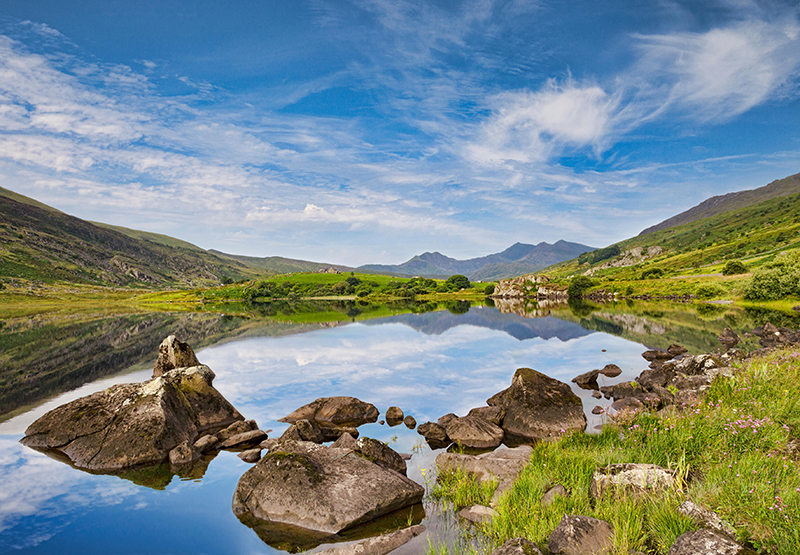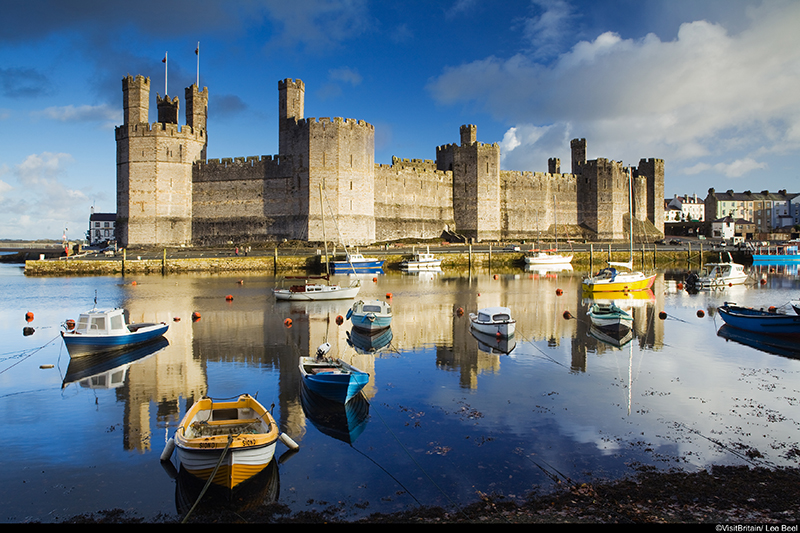The rugged beauty of north Wales has attracted a gallery of artists and poets. We find the castles and landscapes that inspired them
Daniel Defoe, author of Robinson Crusoe, described north Wales as “full of horror”. The region was remote; the landscape wild and rugged. Yet within decades, artists and writers thronged to get there. The painter JMW Turner went five times at the end of the 18th century; the poet William Wordsworth slogged up Snowdon one summer. North Wales was the ideal setting for the Romantic movement: the trend of the day.

The Romantics glorified nature and the past. They sought to experience the “sublime” (a sense of fear and awe) and depict the “picturesque” (composed scenes with unruly elements). Wordsworth argued that poetry should begin as “the spontaneous over ow of powerful feelings”. Emotion was vital. With its grandeur and mystery, north Wales encapsulated Romantic ideas. Artistic and literary types traipsed up Snowdon, the country’s highest mountain, traversing the smaller peaks of Aran Fawddwy and Cader Idris. They ogled Caernarfon Castle, a medieval fortress, and gazed at Dolbadarn Castle and Conwy Castle. At every pace, they contemplated Creation and destruction, enrapt by wonder.
Who first saw the potential of Wales? Was it Turner or Wordsworth? Or was it a now half- forgotten gure? Turner might be the more well- known artist, but without Richard Wilson who knows what he would have created?
Wilson was born in 1714 in the village of Penegoes, now in Powys, north Wales. The son of a clergyman, he started out painting portraits, but switched to landscapes during a trip to Italy in the 1750s. Back home, Wilson received commissions from English and Welsh landowners wanting their estates painted in the Italian style to remind them of their Grand Tours of Europe. Wilson toured Wales and saw it in a new way. Others had seen the country as inhospitable; Wilson pictured grand views.
Landscape painters had put the ideal before the real. Not anymore. Wilson captured the cragginess of the rocks and the sogginess of the air; he made the light dance. Artists had drawn from nature, before returning to their studio to paint fantastical versions. Wilson pioneered plein-air oil sketches – on location.
The mountainous scenery fascinated Wilson, as seen in Snowdon from Llyn Nantlle. At 1,085m (3,560ft), Snowdon (meaning ‘snowfall’ in Old English) is the highest point in the British Isles outside the Scottish Highlands. From the summit, on a clear day, you can see England, Scotland, Ireland and the Isle of Man – or, if you know your geography, 24 counties, 29 lakes and 17 islands.
It is also steeped in Arthurian legend. At the top lies the tomb of the giant Rhitta Gawr, giving the mountain its Welsh name, Yr Wyddfa (meaning an ancient burial mound). Rhitta Gawr wore coats made of men’s beards and was killed by King Arthur for coveting his.
Wilson’s painting Llyn-y-Cau, Cader Idris shows the volcanic lake beside another mountain. Cader Idris means the Chair of Idris, referring either to a giant called Idris, who, according to myth, perched on the peak, or Idris ap Gwyddno, a 7th-century prince who defeated the Irish there. Castles also attracted the painter, as in Caernarvon Castle. The castle was constructed by Edward I in the late 13th century, just after the English had conquered Wales. With its polygonal towers, it was the most expensive fortress built by a king of England.

Wilson’s Llyn Peris and Dolbadarn Castle depicts the ruins of the fortress built by the Welsh prince Llywelyn ap Gruffydd, again during the 13th century. Known as Llywelyn the Last, the royal was the nal indigenous Prince of Wales, and imprisoned his brother Owain Goch ap Gruffydd in the castle for 20 years for insurrection.
Wilson became relatively successful; he was even a founder member of the Royal Academy. But by the 1770s, his fortunes declined and he turned to drink. Turner was a small boy when Wilson died in 1782, but he soon became a fan. Turner made the first of five trips to Wales aged just 17. He sketched views captured by the painter and visited his birthplace.
Read the full article and more about the poets inspired by Wales, see Vol 87 Issue 2 of BRITAIN magazine on sale here
The post Welsh Romance appeared first on Britain Magazine | The official magazine of Visit Britain | Best of British History, Royal Family,Travel and Culture.
Britain Magazine | The official magazine of Visit Britain | Best of British History, Royal Family,Travel and Culture https://www.britain-magazine.com/features/welsh-romance/